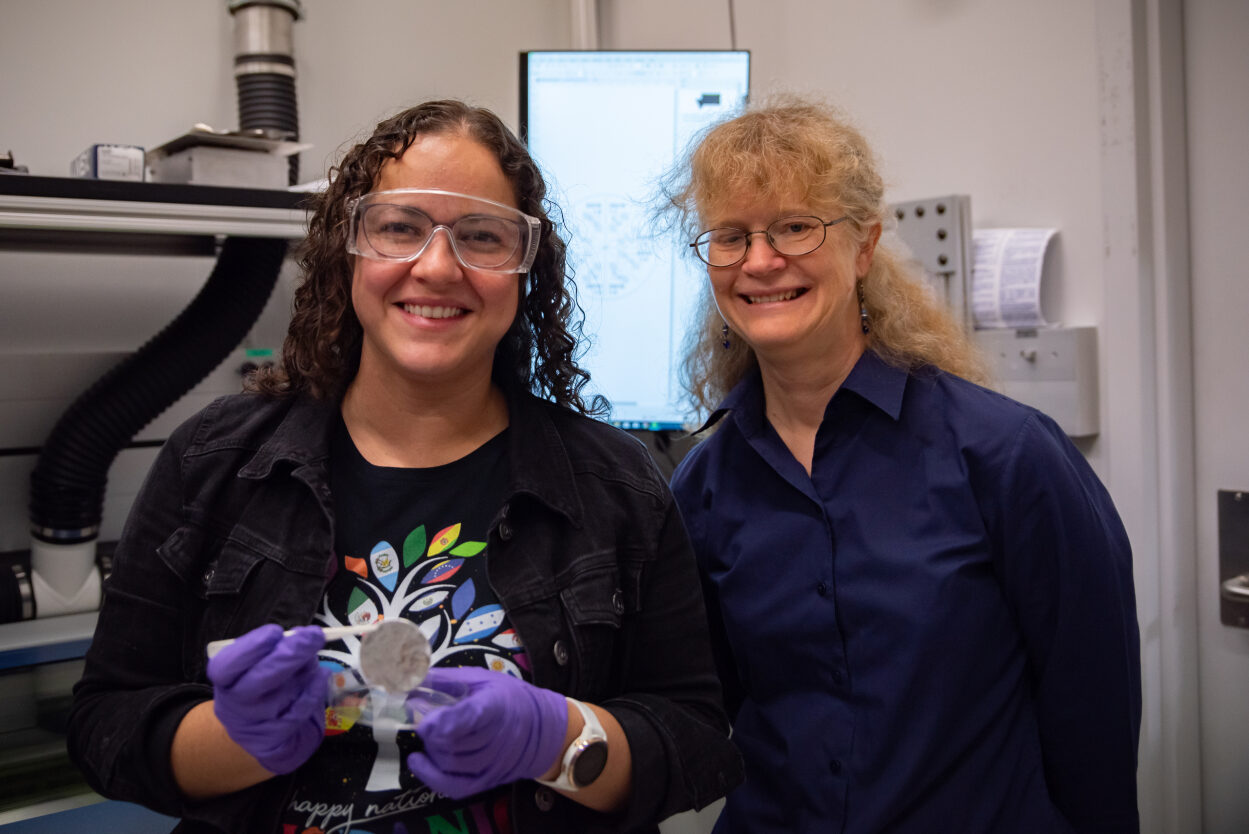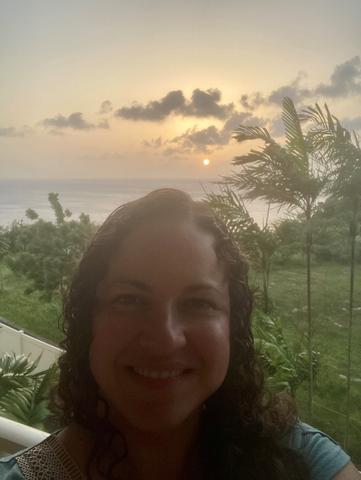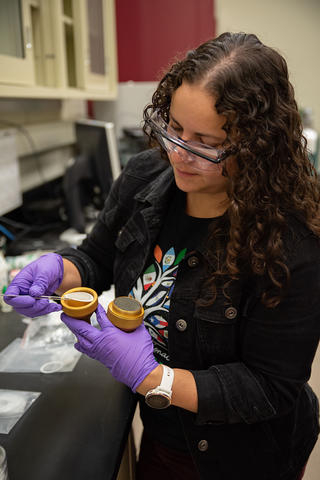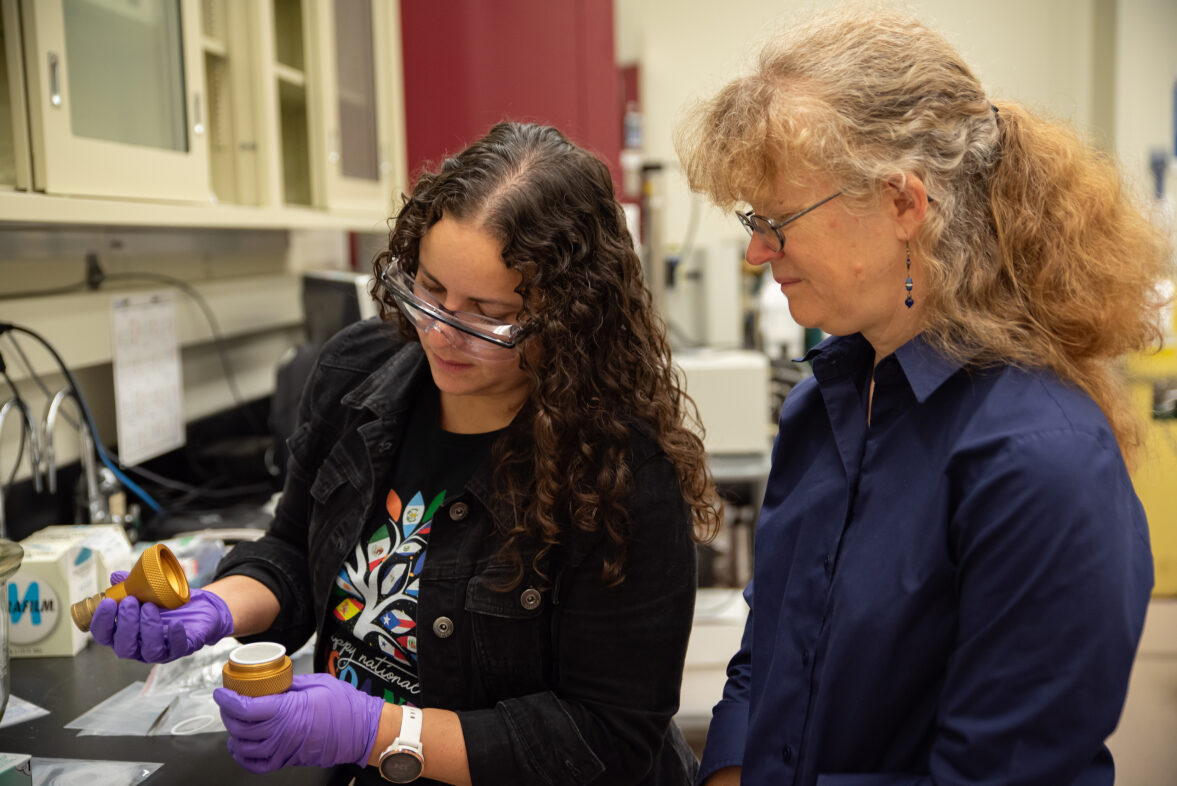Taking Measure
Just a Standard Blog
Microplastics Mystery: Sampling Airborne Microplastics at a Recycling Facility

When I was growing up on the west coast of Puerto Rico, our beautiful blue skies would often turn to an orangish-brown haze due to poor air quality from African desert dust particles from winds.
This usually happens in the summer or fall months. We saw on the news that people should stay inside because of the air.

This always struck me as odd because many homes in Puerto Rico have windows that are not designed to keep the air out; they’re mostly used for keeping the bugs outside. So, I sometimes wondered if people from sensitive groups, such as older people and those with underlying health conditions, were still affected by the air, even if they stayed inside as recommended.
Homes in wealthier communities generally had air conditioning and windows that could close completely. But that was not the norm. Most people had screens that let outdoor air inside easily — potentially leading to an income-based health disparity.
This early experience was one of the factors that led me to study air quality. I wanted to use my scientific knowledge and skills to help people in Puerto Rico and elsewhere who were affected by poor air quality.
Today, as a researcher at NIST, I’m studying atmospheric particles and how they relate to air pollution and our environment. I’ve been doing this for over 10 years and am passionate about this work.
I’m now studying microplastics — the tiny plastic particles that break down from plastic products we use daily — and their effect on our air quality.
Tiny Plastics, Big Impact
If you’re going to study how plastic impacts our air, there’s probably no better place to go than a recycling facility. So that’s precisely what our team did. We partnered with a nearby facility where single-stream recycling materials are separated. We’ve been visiting that facility to take samples of its air and develop methods to detect and identify microplastics in a sea of “junk” particles.
Imagine trying to locate a single water bottle in a massive recycling facility with thousands of pieces of plastic, glass and metal items. When we sample the air in the facility, the filter we use to collect the particles is full of residue from plastics and all kinds of other materials.
So, we have to get those filters into the lab and inspect them under advanced microscopes to find and characterize particular particles — much like finding that single water bottle in a sea of thousands of recycled items!

To make this easier, my team developed a new air filter design that can be used with different microscope techniques to allow us to relocate, detect and identify different particles within the sampled air.
Our research has two goals. First, we want to be able to study microplastics in a complex sample (and a recycling facility with numerous types of plastics certainly offers a complex sample!). Additionally, we’re also hoping to develop new methods to collect air samples and learn more about them. We hope these methods can be used widely for this type of research.
Understanding what’s in the microplastics and how it’s affecting the air around them will help researchers and the government understand what the health effects might be from microplastics.
Already, we’ve seen some fascinating results that raise lots of questions we need to study further.
Going into our study, we expected to see particles in the air created by the plastics moving around the facility — essentially the plastics breaking down into smaller pieces as they get damaged by being handled or moved on their way to being recycled.
But then we saw something unexpected — beautiful, colorful microspheres that appear to be from polystyrenes — the type of plastic used in takeout food containers. But polystyrenes aren’t recyclable in the facility we’re working with. They are removed and thrown in the trash before they enter the area where we are sampling.
Furthermore, the spherical shape of these particles is not indicative of particles generated from the breakdown of larger plastic items, such as food containers. So, we were surprised to see these polystyrene spheres showing up so prominently in our air samples.
While we’re not sure exactly where these polystyrene spheres are coming from, it’s a scientific mystery we’ll continue to study in the months to come.
The Future of Microplastics Research
We know the production of plastics is only going to keep increasing, based on current projections. So that means more microplastics in the air, as well as even smaller nanoplastics. While the definition is an ongoing conversation, one size range for nanoplastics particles is between 1 nanometer and 1,000 nanometers. A nanometer is a billionth of a meter — very tiny!
Right now, microplastics are relatively diluted in the air, but with more plastic, they will be more prevalent. So, we need to understand microplastics and nanoplastics better. It’s our role at NIST to develop methods to measure and characterize them, so that other researchers can learn more about their impacts on our health and the environment.
Microplastics and nanoplastics are a real measurement challenge because tools become increasingly limited as the plastic particle size decreases. This is especially an issue for nanoplastics. However, researchers at NIST and in the greater scientific community are working on better methods to examine, measure and learn more about microplastics and nanoplastics.
Plastics are such a fascinating area of research with very high stakes for our health and the planet. For example, as a parent whose young daughter puts toys in her mouth, I’m hoping to see ongoing research on how microplastics impact young children’s health.
Diversity Makes for Better Research
I’ve had a rewarding career at NIST, and I look forward to many more years of doing this research. Looking back, I can credit some incredible female role models for helping me to get here.
In high school, my friend’s mom worked in a science role for Hewlett-Packard. She gave us a tour of her lab, where I got to see cool microscopes and learn about chemistry. That’s how I started to fall in love with chemistry; what you can see under these microscopes is just so mesmerizing to me.

Later as an undergraduate, I had a female professor who was a scientist, and I wanted to be just like her. I planned to get my Ph.D. and become a professor. While my career wound up taking a different path, my professor showed me that I could have a career working in air pollution research, helping people in Puerto Rico and elsewhere. She encouraged my passions. Her encouragement led me to attend grad school and pursue a Ph.D. under the wing of another influential female professor who empowered me as a young researcher.
I’ve learned throughout my career as a researcher that bringing in different perspectives and varying ways to look at the same problem is so crucial. Studies have shown that more diverse groups of scientists really do better research, and that certainly fits with my experience at NIST. Not only do we have diversity in our backgrounds, but we also have different areas of expertise to look at problems from all angles.
As a researcher, I’ve worked to serve as a mentor to other researchers, just as so many people have mentored me.
Tackling the issue of microplastics is going to continue to be a scientific challenge — one that I’m excited for — and we’re going to need all perspectives possible to bring to this work.
I hope my perspective — and my motivation to help others — can make a difference.






Fantastic research on micro and nano plastics! I share the health concerns that these plastics are having on our bodies, the ecosystem, and the impact on plant and animals as these products enter the waste stream and planet. Keep up the great work and Thank you for keeping us aware.